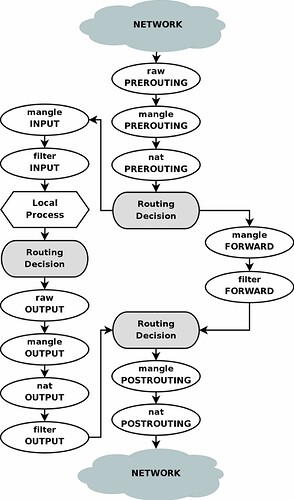So I’m have some experience in administrating firewalls like Palo Alto, FortiGate and currently using OPNsense at home. But since I started to playing around with the Mikrotik Firewall on my hEX I came across something I couldnt get my head around therefore I seek some advise if I understand this correctly.
Since the Mikrotik does not have a Implicit Deny, I added these manually for the forward and input chain in the default config. After that also the return traffic from already established connection were dropped from the WAN interface. At first I thought the Mikrotik firewall works like a simple packet filter.
But the logs and documentation showed me otherwise.
So I learn that I had to allow established and related to the incoming WAN interface.
Since I never came across something like this on other firewalls like OPNsense, do other firewall vendors implicitly allow this established or related traffic?
Is it the “correct” or safe to allow established/related traffic connections for the return packets from the WAN interface?
This is my current configuration:
/ip firewall filter
add action=accept chain=input connection-state=established,related,new,untracked src-address=192.168.88.0/24
add action=drop chain=input comment="defconf: drop invalid" connection-state=invalid
add action=accept chain=input comment="defconf: accept ICMP" protocol=icmp
add action=accept chain=input connection-state=established dst-port="" log=yes log-prefix="dns input" protocol=udp src-port=53
add action=drop chain=input comment="defconf: drop all not coming from LAN" in-interface-list=!LAN log=yes
add action=drop chain=input log=yes log-prefix=drop_Input
add action=accept chain=forward connection-state=established,related in-interface=ether1
add action=fasttrack-connection chain=forward comment="defconf: fasttrack" connection-state=established,related hw-offload=yes
add action=accept chain=forward connection-state=established,related,new,untracked log=yes src-address=192.168.88.0/24
add action=drop chain=forward comment="defconf: drop invalid" connection-state=invalid
add action=drop chain=forward comment="defconf: drop all from WAN not DSTNATed" connection-nat-state=!dstnat connection-state=new in-interface-list=WAN
add action=drop chain=forward log=yes log-prefix=drop_forward
Thanks for your input!
